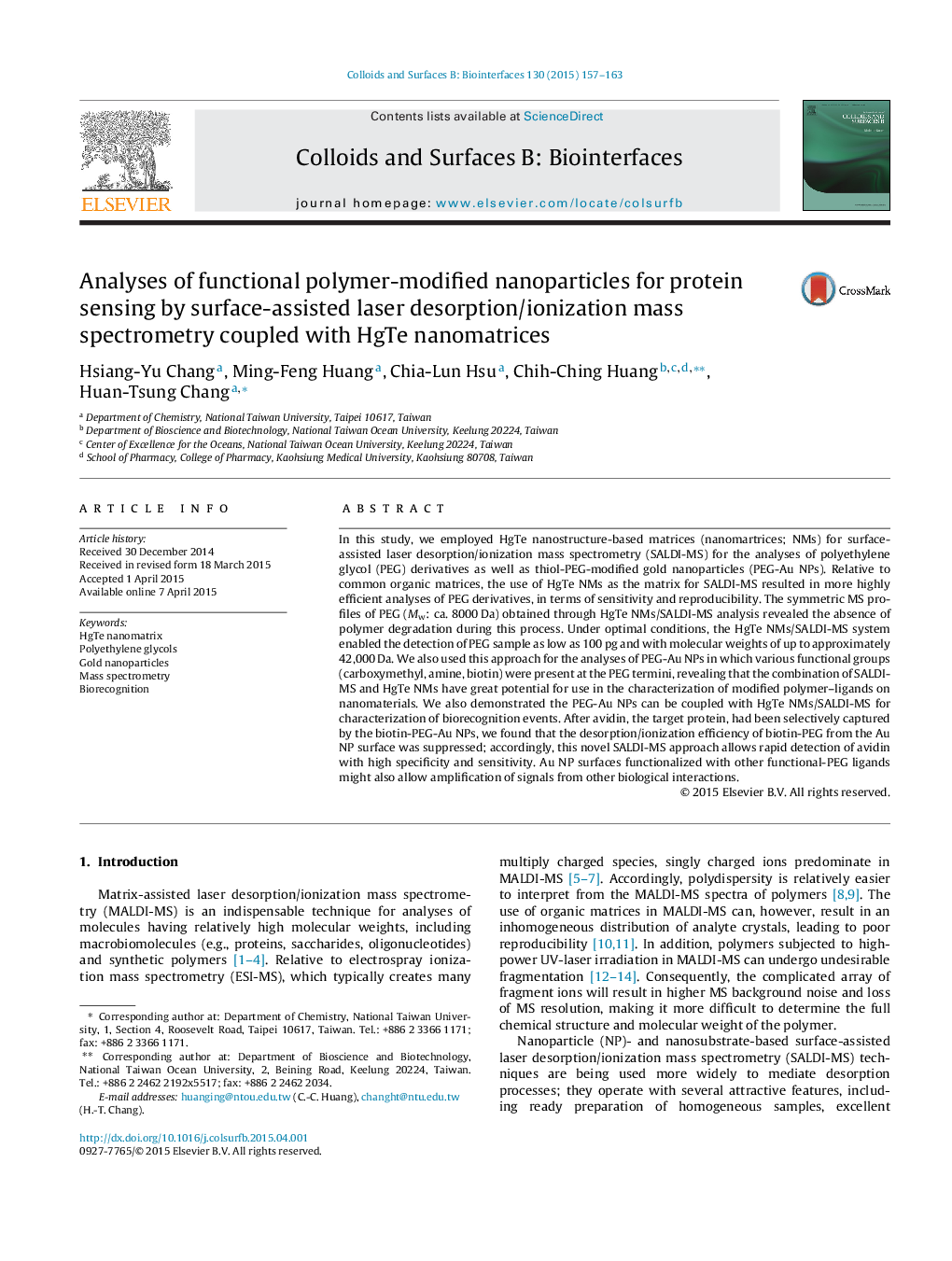| کد مقاله | کد نشریه | سال انتشار | مقاله انگلیسی | نسخه تمام متن |
|---|---|---|---|---|
| 599331 | 1454274 | 2015 | 7 صفحه PDF | دانلود رایگان |

• Analyses of polyethylene glycol (PEG) derivatives by SALDI-MS coupled with HgTe nanomatrices (Hg NMs).
• Detection of PEG with molecular weights of up to approximately 42,000 Da.
• Analyses of thiol-PEG-modified gold nanoparticles (PEG-Au NPs) in which various functional groups.
• PEG-Au NPs coupled with HgTe NMs/SALDI-MS for characterization of biorecognition events.
In this study, we employed HgTe nanostructure-based matrices (nanomartrices; NMs) for surface-assisted laser desorption/ionization mass spectrometry (SALDI-MS) for the analyses of polyethylene glycol (PEG) derivatives as well as thiol-PEG-modified gold nanoparticles (PEG-Au NPs). Relative to common organic matrices, the use of HgTe NMs as the matrix for SALDI-MS resulted in more highly efficient analyses of PEG derivatives, in terms of sensitivity and reproducibility. The symmetric MS profiles of PEG (Mw: ca. 8000 Da) obtained through HgTe NMs/SALDI-MS analysis revealed the absence of polymer degradation during this process. Under optimal conditions, the HgTe NMs/SALDI-MS system enabled the detection of PEG sample as low as 100 pg and with molecular weights of up to approximately 42,000 Da. We also used this approach for the analyses of PEG-Au NPs in which various functional groups (carboxymethyl, amine, biotin) were present at the PEG termini, revealing that the combination of SALDI-MS and HgTe NMs have great potential for use in the characterization of modified polymer–ligands on nanomaterials. We also demonstrated the PEG-Au NPs can be coupled with HgTe NMs/SALDI-MS for characterization of biorecognition events. After avidin, the target protein, had been selectively captured by the biotin-PEG-Au NPs, we found that the desorption/ionization efficiency of biotin-PEG from the Au NP surface was suppressed; accordingly, this novel SALDI-MS approach allows rapid detection of avidin with high specificity and sensitivity. Au NP surfaces functionalized with other functional-PEG ligands might also allow amplification of signals from other biological interactions.
Figure optionsDownload as PowerPoint slide
Journal: Colloids and Surfaces B: Biointerfaces - Volume 130, 1 June 2015, Pages 157–163